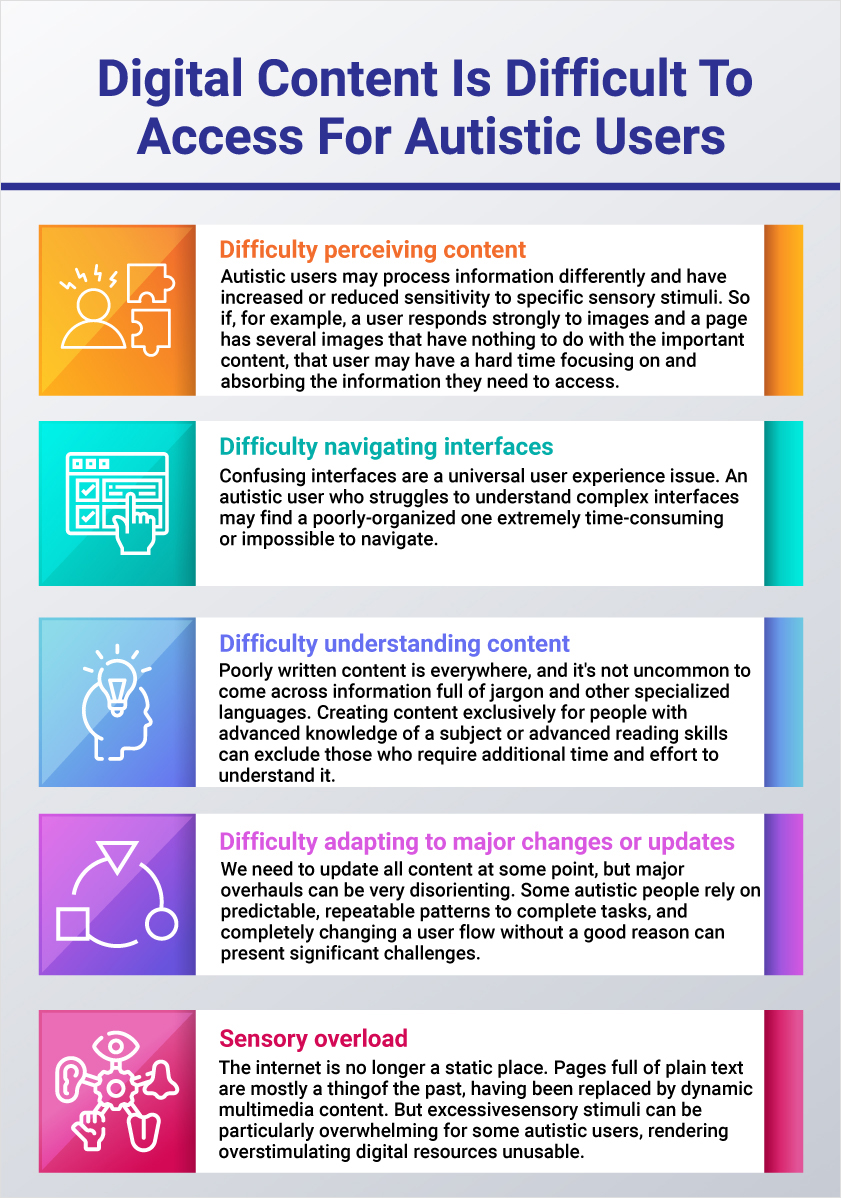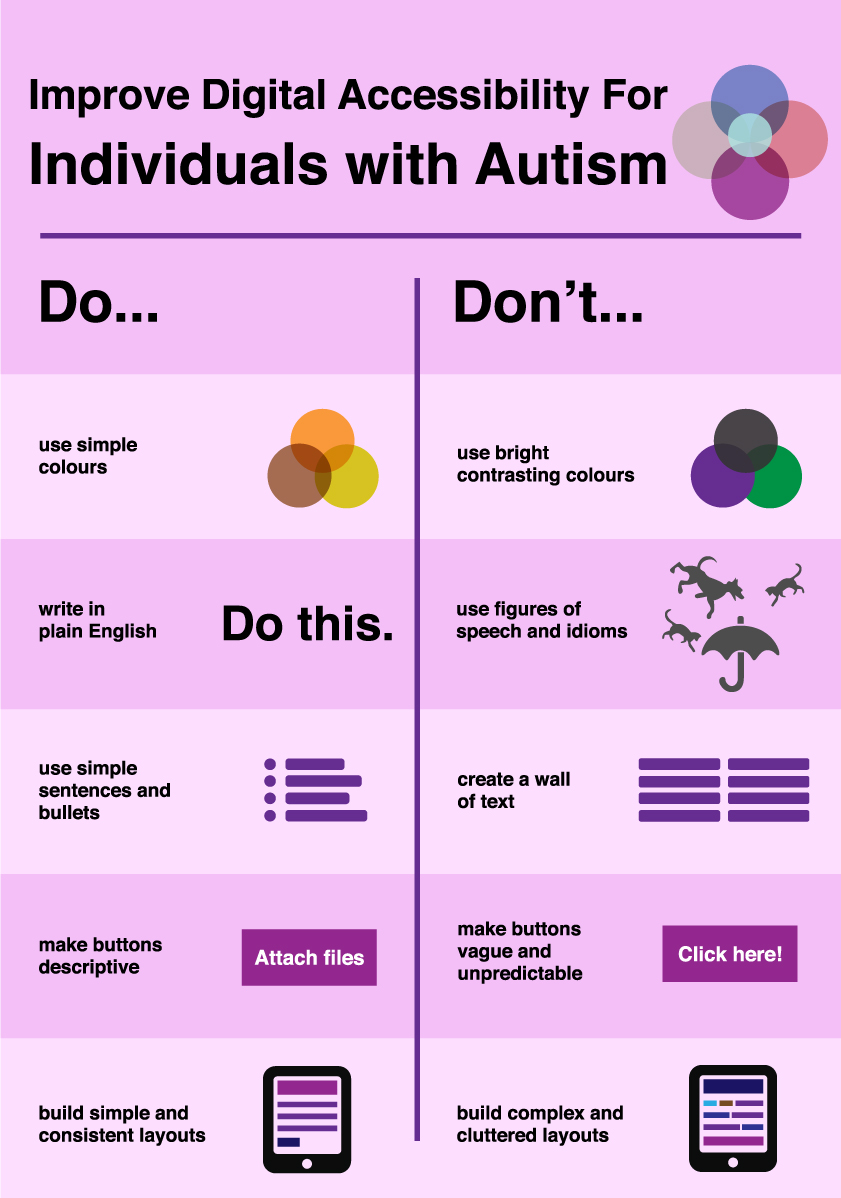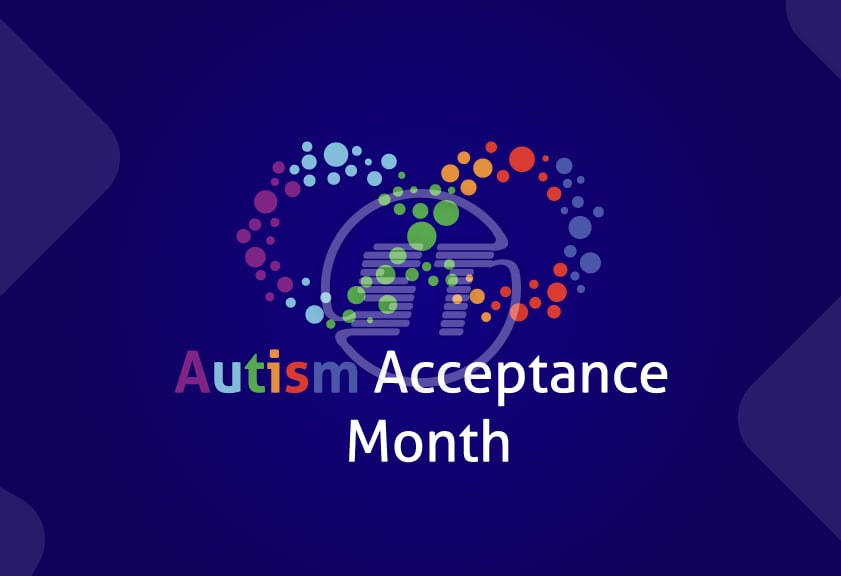“It takes a village to raise a child and it takes a child with autism to raise the consciousness of the village.”
The Autism Acceptance Month (April) reflects a deeper understanding of the need for inclusivity and support for autistic individuals. Autism is a neurodevelopmental condition characterized by differences in social communication and interaction, as well as restricted interests and repetitive behaviors. According to the Centers for Disease Control and Prevention (CDC), approximately 1 in 54 children in the United States is diagnosed with ASD (Autism Spectrum Disorder).
Earlier, societal attitudes towards autism often portrayed it as a condition requiring a cure to fix. However, this narrative failed to acknowledge the strengths and unique perspectives of autistic individuals. Today, the focus has shifted towards acceptance, recognizing that autism is as natural as other human diversities.
When it is about acceptance, every facet of life matters including the digital aspect, which is one of the critical areas to focus on. This article will shed light on the autism spectrum and digital inclusion.
Misconception about autism
In the era of technology and innovations, inclusion and acceptance are still questionable. The autism community encounters myriad struggles from the rest of the world that are major hindrances in their personal growth. Each individual has the right to have access to basic requirements for instance, education and employment, and thereby, autism acceptance is a dire need in the current situation.
However, there are stereotypes that autistic people cannot pursue their desired education or jobs like a normal person. Certainly, this disability makes them different from others and they might not perform their tasks at the same pace as their counterparts, but work efficiency should not be judged without giving them a fair chance.
Many-a-time, non-autistic people claim that people on the autism spectrum lack social skills, empathy, or learning abilities. And this is the point, where society needs to learn how to accept autistic individuals with their uniqueness. To spread more awareness of autism, people celebrated 2nd April as World Autism Awareness Day. Governments are also taking action to provide support to these individuals by making acts and regulations.
Acts made by governments to help autistic citizens!
There are legislations dedicated to ASD:
- Americans with Disabilities Act, 1990 (ADA) (42 U.S.C. Chap 126 and Public Law 104-76): This act protects the civil rights of individuals with any sort of disabilities in every area of life.
- Children’s Health Act, 2000 (Public Law 106-310): The National Centre on Birth Defects and Developmental Disabilities at the CDC and the National Institutes of Health (NIH) established this act to promote research, monitoring, prevention, and treatment of autism.
- Individuals with Disabilities Education Act (IDEA), 1990 (20 U.S.C. Chap 33 and Public Law 101-476) and Reauthorization, 2004 (Public Law 108-446): The act ensures that autistic children get appropriate public education to meet their unique needs and prepare for higher studies and employment.
- Combating Autism Act, 2006 (Public Law 109-416): Provides funds for ASD and developmental disabilities research, screening, treatment, and education. The act has also established a Federal Advisory Committee (the Interagency Autism Coordinating Committee IACC) to provide support for ASD research.
- Autism Collaboration, Accountability, Research, Education and Support (Autism CARES) Act, 2014 (Public Law 113-157): This is a reauthorized provision within the Public Health Service Act relating to autism help research, service, and support activities.
- Autism Collaboration, Accountability, Research, Education, and Support Act of 2019 (Autism CARES) (Public Law 116-60 and House Report 116-77): An amended form of the Public Health Service Act to enhance activities of the National Institutes of Health concerning ASD research and to also increase the autism-related programs.

Consequences of non-adherence to autism acts!
People on the autism spectrum must get equal opportunities to live their lives independently. And to provide them with accessible education and employment opportunities, every organization ought to comply with the suggested guidelines. The above-mentioned acts need to be learned and applied as and when needed.
Failure to comply with guidelines for autism can lead to hefty penalties and lawsuits that are not good for the brand image of any business or organization.
Practices that can be applied to improve digital accessibility!
Digital accessibility can be achieved by applying a few certain defined guidelines. Please note that before applying accessibility, knowledge of WCAG latest standards is essential.

Customizable font sizes and colors
Accessible web design facilities adjustable font size and color to improve the legibility of the content. It also reduces eye strain, which helps autistic readers to explore the content easily. This feature also assists other users to read content without any trouble, enhancing user experience.
Clear headings and labels
Descriptive headings with consistent structure and understandable content, make it seamless to find desired information for autistic people. Headings and labels should have an easy-to-read, simple language with consistent font style, font size, and precise color contrast.
Personalized navigation
Autistic individuals might face difficulty navigating complex or cluttered interfaces. Personalized navigation improves overall accessibility for every user since it gives them options to tailor the navigation to their needs.
Simplified layouts
Simplified layouts refer to minimal design for a website to reduce the distraction for autistic users. Unwanted elements with excessive dynamic content are the biggest barriers for individuals on the autism spectrum. Minimal design is, in general, people’s favorite because they are straightforward containing relevant information.
Large touch targets
Large buttons, links, and interactive elements on mobile devices are collectively known as large touch targets. It gives more room to tap the buttons or click the links, reducing the odds of missing the taps and improving accessibility.
Skynet Technologies Reduces Accessibility Barriers for the Inclusive Digital World
As we observe Autism Acceptance Month this April, let us reaffirm our commitment to promoting accessibility and inclusion for autistic individuals. By embracing diversity, fostering understanding, and advocating for the rights and needs of autistic individuals, we can create a more inclusive and accepting society for all. Together, let’s celebrate the strengths and contributions of autistic individuals and work towards a world where everyone is valued and included, regardless of neurodiversity.
With over 9 years of experience in the digital accessibility industry, Skynet Technologies helps businesses, organizations, firms, entities, institutes, and others to evaluate and ensure digital accessibility as per ADA, Section 508, and WCAG 2.0,2.1, & 2.2. With our manual accessibility audit and managed accessibility remediation services, we help them to enhance and improve their digit assets for accessibility and inclusivity for everyone, including people with disabilities. Take a first step towards digital accessibility and request a manual digital accessibility audit quote . For more information, reach out hello@skynettechnologies.com


